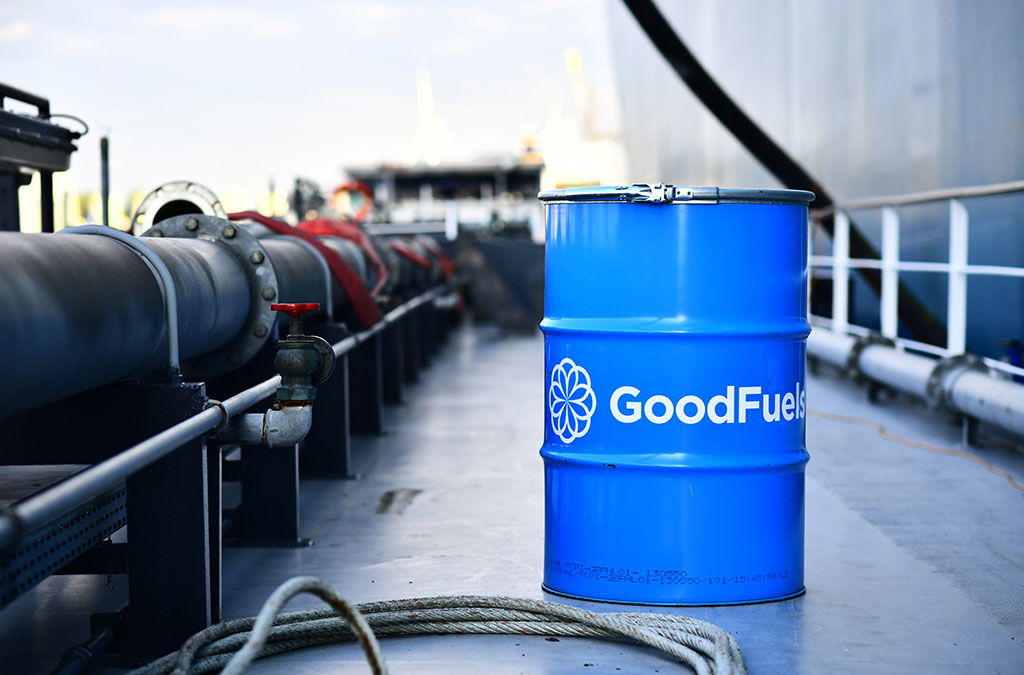Layered landscape: why shipowners will need to take a multi-layered approach to meeting regulations on marine biofuels


The maritime industry is undergoing a significant shift in how it approaches fuel procurement. What used to be a straightforward process – contacting suppliers, comparing prices, and securing the best deal – now demands deeper focus when it comes to low-carbon fuels, particularly on issues of sustainability and compliance.
The low-carbon fuels that are most used for regulatory compliance and which are expected to remain the largest share over the next few years are biofuels. This spans both drop-in biofuels, such as Fatty Acid Methyl Ester (FAME), or alternative biofuels, such as bio-LNG and bio-methanol.
However, the procurement of low-carbon biofuels requires an understanding not only of quality and pricing but also of certification procedures, sustainability criteria, and regulations.
The regulatory framework governing biofuel procurement is defined by three major regulations. First, there is the International Maritime Organization’s (IMO) Carbon Intensity Indicator (CII), which focuses on reducing the carbon intensity of work performed by a vessel. Second, there is the European Union’s Emissions Trading System (EU ETS), which came into place in 2024 and requires shipping companies to buy ETS allowances for each tonne of CO2 emitted. Thirdly, there is FuelEU Maritime (FEUM), which starts next year and aims to reduce the GHG intensity of the energy used onboard vessels. Last, depending on the country, fuel suppliers also have to meet national renewable fuel blending mandates.
This is a layered landscape of regulations, which can have real impacts depending on the biofuels that are being procured. For example, a biofuel such as Soybean Methyl Ester (FAME produced from soybean oil) might be high quality, have a relatively low price point, and meet ISSC certification criteria, but typically will not meet the GHG savings levels required by CII. The same fuel is also not eligible for FuelEU Maritime since it is a crop-based biofuel.
Meanwhile, a Used Cooking Methyl Ester (FAME produced from used cooking oil) might meet all the sustainability criteria of CII and FEUM, but if it lacks certification, then it is also still not eligible.
Each regulation imposes distinct sustainability criteria for biofuel. Under CII, biofuels must achieve a minimum of 65% GHG reduction compared to a baseline of 94 gCO2eq/MJ. FEUM requires compliance with the Renewable Energy Directive II (RED II) and mandates the use of waste and residue-based feedstocks. The ETS allows both crop-based and waste-based biofuels, provided they meet the standards of RED II, to be counted as zero-emissions fuels.
To showcase that the biofuels meet these sustainability criteria, a certification is required. For biofuels to be eligible for CII, they need to be International Sustainability and Carbon Certification (ISCC) or Roundtable on Sustainable Biomaterials Association (RSB) certified. For ETS and FEUM, the biofuels need to be certified by an EU-approved voluntary scheme, such as ISCC EU, REDCert EU or RSB EU.
The EU-approved voluntary schemes, such as ISCC EU, are designed to ensure compliance with RED II and its associated implementing regulations. This means its processes and procedures are aligned with the mandatory requirements outlined in RED II. The voluntary schemes are responsible for developing guidelines, also called system documents, that include, for example, the auditing procedures, how to calculate GHG emissions, how to maintain a mass balance and how to forward documentation in line with RED II.
Afterwards, certification bodies, such as Control Union, audit if an economic operator (such as an ISCC-certified biofuel bunker supplier) has followed these procedures correctly. The document that shows the biofuel’s sustainability characteristics and that it complies with the criteria of RED II is the Proof of Sustainability (PoS). This document shows that the entire supply chain has been certified and can, therefore, be used by the end user as proof to demonstrate compliance with the sustainability criteria set out in the regulations.
The procedures on how to forward the sustainability declarations look relatively straightforward. In the real world, however, they are only straightforward up until the point of supply.
When the end user requires a PoS for biofuel bunkered in a country with a supplier biofuel mandate, such as the Netherlands, complexities arise. The issue comes from the fact that both the supplier and the end user need the PoS to prove they complied with their compliance obligations. However, the current ISCC process does not permit a PoS to be assigned to multiple parties, forcing a choice between the supplier or the buyer for regulatory compliance. Legislations like RED II and ETS are designed to work in tandem, with one driving supply and the other driving demand. However, this synergy breaks down due to the administrative gap. Resolving this issue in the short term is crucial, as the uncertainty is leading to hesitation among suppliers and buyers to invest further in marine biofuels.
Unfortunately, there is currently a lack of clear guidelines on how one batch of biofuel should be reported by both the fuel supplier for the RED II mandate and by the end user for FEUM, ETC and CII. In the short term, a Proof of Compliance (PoC) document might be introduced. This is a document containing similar information as the PoS, which can be used by the end consumer to prove the compliance of the fuel.
Efforts to solve this have been made by the European Commission with the development of the Union Database. Unfortunately, the latest estimates are that this will only be ready by 2026 at the earliest; a year after FuelEU and two years after EU ETS for shipping have entered into force. This would also only be a solution for biofuels bunkered in the EU.
The need for guidance from the authorities is therefore urgent. Fuel suppliers and shipping companies alike need clear procedures. Government authorities should cooperate with relevant stakeholders in the sector (such as EU MRV data verifiers and the involved companies) and provide good guidance to explain what documentation each party in the value chain has to show in order to prove compliance with their regulatory emissions reduction obligations.
And while certification and the administrative processes around sustainability documentation are expected to remain a complex topic in the short term, there are reasons to be optimistic for the future. The development of the Union Database, as well as any equivalent effort by the IMO to enable compliance with its own mid-term measures, will help to clear up this picture considerably.
Of course, there are many other challenges that also need to be solved as part of our industry’s future fuels transition. Fundamental questions around scale of supply, and price and the impact on end consumers, remain.
But we must balance long-term ambitions with short-term implementation – and it is critical that regulators work closely with industry players to help squash some of the persistent issues around compliance, if we are to build the foundation for change that our sector really needs.

Johannes Schurmann
Commercial Director International Marine,
FincoEnergies
This article was first published in Bunkerspot's edition "Early Learning: Lessons from First Movers" - Volume 21 - Number 6 - December 2024 / January 2025
• World's first bunker delivery using blockchain technology
• Industry-led demonstrator consortium for blockchain use in bunkering
• World’s First Ultra Low Carbon & Sulphur Drop In ‘Bio-Fuel Oil’





